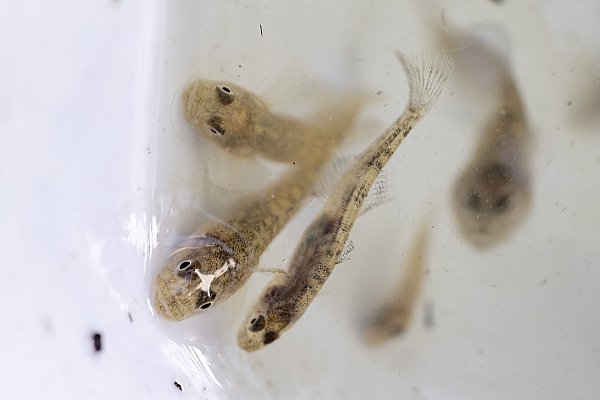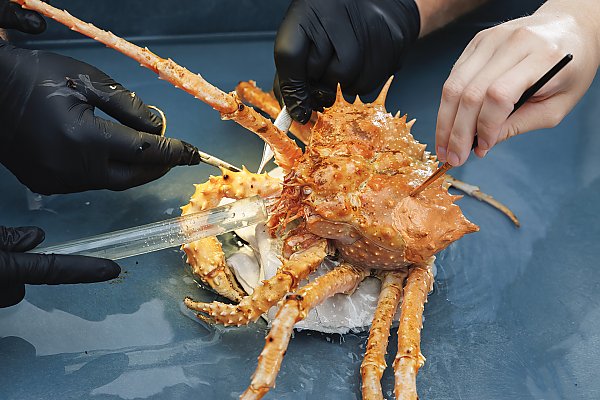New FROGS Exhibits Now Open
Plus Our Water Future and Archerfish Exhibits

Magnificent Tree Frog *Litoria splendida* Credit: Brian Gray
May 25, 2017
Discover the dazzling diversity of frogs and their amphibian relatives at the Aquarium in the new FROGS: Dazzling and Disappearing exhibit. Nearly two dozen species in thematic displays, along with educational graphics and immersive sights and sounds will highlight the beauty of and threats to these remarkable animals. The exhibit traces the history of amphibians, details their life cycles, demonstrates the different environments they live in from deserts to rainforests, and highlights the diversity of species and their surprisingly uncertain future. Visit the FROGS exhibit in the Tropical Pacific Gallery on the second floor.
Educational programming will include a new show played daily in the Great Hall and a mini-series of lectures on amphibians. Aquarium visitors will also be able to meet some of our new amphibian residents up close with a keeper at the frog cart.
In addition, the Aquarium’s Our Watersheds: Pathway to the Pacific exhibit has been transformed into Our Water Future, an interactive space to help visitors understand where our water comes from and what conservation issues our supply faces now and in the future. Find out what you can do to conserve water and which actions are most effective. The exhibit redesign is funded by a grant from the San Gabriel and Lower Los Angeles Rivers and Mountains Conservancy (RMC).
Our Water Future includes up-to-date information, new signage and digital displays, a new Monarch Butterfly Garden, and upgrades to the PREMIER Watershed Classroom, Long Beach’s first LEED Platinum building. The Our Water Future exhibit area also features new landscaping and trees, as well as additional bench seating.
Finally, the Aquarium has added an exhibit featuring archerfish on the Harbor Terrace overlooking Rainbow Harbor. The exhibit is located next to the mudskipper exhibit outside the Aquarium’s classrooms across from the Moon Jelly Touch Lab. Archerfish have the ability to spit a jet of water above the surface as a method of hunting insects and other prey. They typically are found in mangroves and estuaries from India to the Philippines, Australia, and Polynesia. Visitors have the opportunity to see this unusual method of capturing food during daily feedings.






